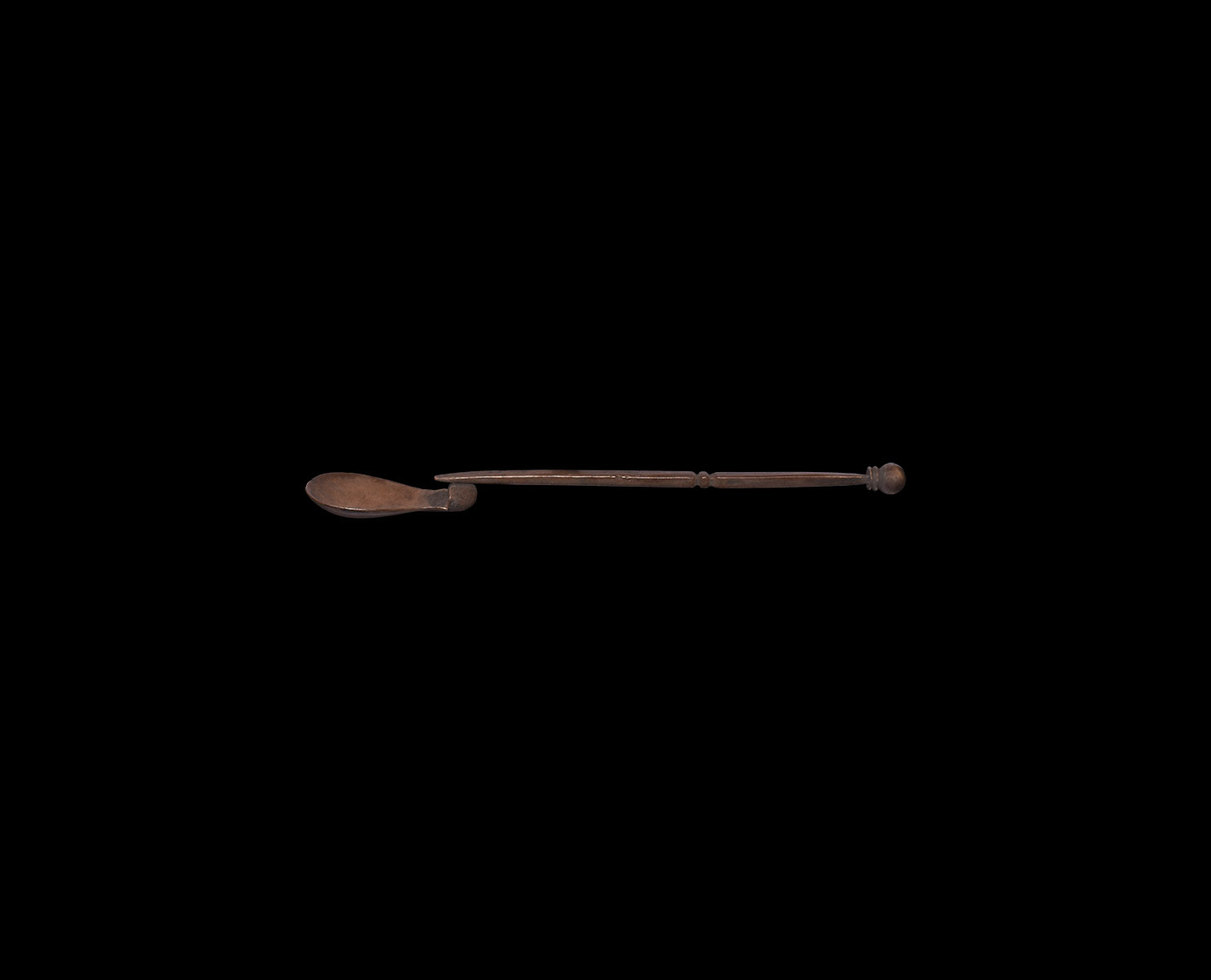LATE ROMAN SWAN-NECKED SPOON 4th century AD A silver spoon with long thin handle ending in a point to one end; to the other end a curved 'swan neck' below attached to the tear drop shaped shallow bowl. 11 grams, 17cm (6 3/4"). [No Reserve] Condition Fair condition, some loss to bowl. Provenance Property of a South African collector; acquired in the UK between 1988-1990. Literature For a similar spoon see The Metropolitan Museum of Art, accession number 17.191.211 Footnotes Roman spoons are divided in the two groups of ligulae and cochlearia. The first are recognizable with a large oval spoon bowl and a blunted grip. Most likely they were used to perpare and serve the dishes. The smaller cochlearia had a smaller spoon bowl and a thin, pointed grip, an ancient substitute of the modern fork. They were used as the common tablespoons and are found everywhere in the Roman Empire
LATE ROMAN SWAN-NECKED SPOON 4th century AD A silver spoon with long thin handle ending in a point to one end; to the other end a curved 'swan neck' below attached to the tear drop shaped shallow bowl. 11 grams, 17cm (6 3/4"). [No Reserve] Condition Fair condition, some loss to bowl. Provenance Property of a South African collector; acquired in the UK between 1988-1990. Literature For a similar spoon see The Metropolitan Museum of Art, accession number 17.191.211 Footnotes Roman spoons are divided in the two groups of ligulae and cochlearia. The first are recognizable with a large oval spoon bowl and a blunted grip. Most likely they were used to perpare and serve the dishes. The smaller cochlearia had a smaller spoon bowl and a thin, pointed grip, an ancient substitute of the modern fork. They were used as the common tablespoons and are found everywhere in the Roman Empire















Testen Sie LotSearch und seine Premium-Features 7 Tage - ohne Kosten!
Lassen Sie sich automatisch über neue Objekte in kommenden Auktionen benachrichtigen.
Suchauftrag anlegen